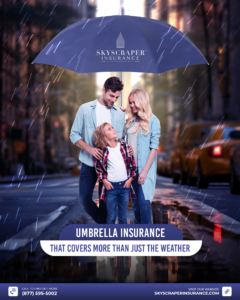As the cause of the Miami oceanfront building tragedy is further investigated, what insurance issues may be at hand?
Editor’s Note: Read part one of this article series that explores the issues that may have caused the partial collapse of the building.
As the cause of the partial collapse of the Miami area oceanfront condominium is further investigated, what insurance issues may be involved?
First is a question concerning Additional Living Expenses (ALE) for unit owners who had no damage to their own units but must relocate. ALE coverage is triggered from a loss by a peril insured against to covered property or the building containing the property that makes the “residence premises” not fit to live in. If there is no damage to the building the insured’s unit is in, but the insured is advised to vacate the premises, there is no coverage for additional living expenses.
But what about civil authority? If the civil authority prohibits an insured from occupying the premises, shouldn’t there be coverage for at least two weeks? If the civil authority prohibits access to the building because of damage to a neighboring premise by an insured peril, then there would be two weeks of coverage. So the Champlain Towers North residents that did not collapse but that is next to the collapsed building would have that coverage as long as the damage is from a covered peril. So let’s look at covered perils.
Covered perils invovled
Remember, the ISO HO 00 06 Unit Owners policy is a named peril policy and is designed around providing coverage for the unit owner’s contents and additions and alterations. Collapse is not a named peril. An explosion is a named peril and has no qualifying language. From what we’ve seen, the colla[se was unlikely caused by an explosion, even though it is a broad peril, would be seen as the cause of the loss. It seems that corrosion due to weather or faulty planning or construction is the likely cause of the loss, not an explosion.
Fortunately, the additional coverage for collapse provides coverage for an abrupt falling down or caving in of a building or any part of a building with the result that the building or part of the building cannot be occupied for its intended use. A look at the video shows that this is exactly what happened; the building abruptly collapsed. However, coverage applies only if the collapse was caused by certain causes as follows:
- Decay of a building or any part of a building that is hidden from view unless the decay was known to an “insured” prior to collapse;
- Hidden insect or vermin damage;
- Weight of contents, people, equipment or animals;
- Weight of rain which collects on a roof, and
- Use of defective material or methods in construction, remodeling or renovation if the collapse occurs during the course of the construction, remodeling or renovation.
Therein lies a problem: If it is proven that the building collapsed due to defective construction since the building was not under renovation at the time of loss that would have caused the loss, there is no coverage. Decay of a building that is hidden from view is considered a covered cause of loss unless known to an insured. The question here is what is known to an insured; the condominium board received an engineer’s report in 2018 outlining problems. This information should have been passed along to the unit owners, which would give them knowledge of the deficiencies. This would likely constitute knowledge by the insured of hidden decay or damage, and thus, coverage would not be granted. The resident reports of a regularly flooded parking garage will make it hard for residents to say they didn’t know a problem existed.
Because of the nature of the relationship between the unit owners and the association, this is tricky; we can only discuss the policy language as it is written, as we have no knowledge of what the insured’s did or didn’t know or what policy forms are in force for the unit owners. As always, different forms may have different wording. What if the association sent notice to the unit owners, but some unit owners didn’t read the notice? Can they say they didn’t have knowledge of the issues with the building?
If it is determined that a sinkhole opened up underneath the building, then the earth movement exclusion would negate any coverage. Subsidence, sinkhole, earth movement, including sinking, rising or shifting, are all excluded. Sinking has also been mentioned as a possible contributing cause of loss. So the individual unit owners have no coverage for their belongings lost in the tragedy.
Unit owners may likely receive an assessment for fees not covered by the condominium master policy. Unfortunately, like additional living expenses, for coverage to apply, the assessment must be due to damage caused by a peril insured against under Coverage A. Again, that coverage is named perils as discussed, so there would be no coverage.
Will insurance cover liability?
What about liability coverage for unit owners who were part of the association board? If the board is found guilty of failing to take action to properly maintain the building to protect it from collapsing, is there coverage?
As always, coverage is for physical damage or injury from an “occurrence,” an accident for which the insured is legally liable. The Section II liability portion of the policy is open perils, so coverage exists for anything not excluded. Loss assessments are excluded except for what is added by the additional coverage.
The additional loss assessment coverage provides up to $1,000 for the insured’s share of loss assessment charged during the policy period as owner or tenant of the premises if the assessment is due to injury or damage that’s not excluded, or liability for acts of a director, officer or trustee in his capacity as such as long as that person is elected by the members of the association or board and serves without receiving income for serving on the board.
If an assessment is made against the unit owners for liability for damages resulting from acts of board members, then there is coverage. For example, Joe is elected to the association board of the complex. If it is determined that Joe and other board members made decisions that led to the property not being properly maintained that contributed to the collapse and an assessment is made against the unit owners, there would be coverage for that assessment.
Concerning the commercial general liability coverage, each board member would be an insured, but only for their participation and duties as a board member. As such, the policy should provide them with defense coverage for claims against them for bodily injury, property damage, or personal and advertising injury liability that would be otherwise covered under the policy.
What about the building itself? What coverage is there? The ISO CP 00 17 Condominium Association Coverage Form provides coverage for the building listed in the Declarations, including completed additions, fixtures outside individual units, including outdoor fixtures, permanently installed machinery and equipment, and personal property owned by the insured to maintain or service the building. Coverage is provided for direct physical loss or damage to covered property caused by or resulting from a covered cause of loss. What are the covered causes of loss? That depends on the causes of loss form listed in the Declarations.
The CP 10 10 Basic form and CP 10 20 Broad form are named perils forms. The only named peril that could possibly provide coverage is sinkhole collapse if it turns out that a sinkhole was the cause of loss. Otherwise, there would be no coverage. The CP 10 30 Special form is open perils, so unless there is an exclusion, there would be coverage. Earth sinking other than sinkhole collapse is excluded, including rising or shifting, including soil conditions that cause settling, cracking or other disarrangements of foundations or others parts of the structure.
However, CP 01 25 Florida Changes is a mandatory commercial property endorsement applicable to Florida property. This endorsement removes sinkhole coverage and instead provides coverage for catastrophic ground cover collapse. Catastrophic ground cover collapse pays for direct physical loss or damage to covered property from catastrophic ground cover collapse, which means geological activity that results in all of the following:
- The abrupt collapse of ground cover;
- A depression in the ground cover clearly visible to the naked eye;
- “Structural damage” to the building, including the foundation;
- The insured structure being condemned and ordered to be vacated by the governmental agency authorized by law to issue such an order for that structure, and
- Damage that merely consists of settling or cracking a foundation, structure or building is not catastrophic ground cover collapse.
Since all four of the geological activity elements must be presented, and the building meets the definition of “structural damage” in the endorsement, it is unlikely that this catastrophic ground cover collapse cause of loss will apply, given the previously known structural issues and the lack of evidence of ground cover collapse or clearly visible depression.
The ISO Executive Liability Coverage Form MP 00 01 excludes coverage arising out of any dishonest, malicious, fraudulent or deliberately criminal act or willful violation of statute. It is doubtful that the association’s delay in getting the repairs completed more timely would be considered a deliberate act, particularly given the magnitude of the repairs required and the cost involved that would require large assessments to the unit owners. In addition, it is reasonable that the pandemic slowed progress in getting the repairs voted upon, securing the needed funds, and getting contractor bids.
The form also excludes coverage for any wrongful acts that occurred before the retroactive date of coverage. A wrongful act includes an actual or alleged error, misstatement, misleading statement, neglect or breach of duty, omission, or act by the insured persons in their capacity for the organization. Depending upon the facts of how and when the association board addressed the situation to the unit owners and the insurer, this exclusion could come into play. Otherwise, there would be liability and defense coverage up to the limit of liability for the association board for wrongful acts not excluded under the policy.
It is important to note that the policy covers only monetary damages and will not cover losses or claims expenses that include civil or criminal fines or penalties, punitive or exemplary damages, or multiplied damages, taxes, or matters considered uninsurable by law.
It will be several months before engineers and analysts determine the cause of the collapse of the building. The cause of the collapse will determine coverage, but as we have seen, individual unit owners are apt to have no coverage for their belongings lost in the tragedy. Coverage for the building likely exists depending on the actual cause of loss as that policy is open perils, and there is no exclusion for the building falling in upon itself. There are sure to be many coverage questions coming out of this.








